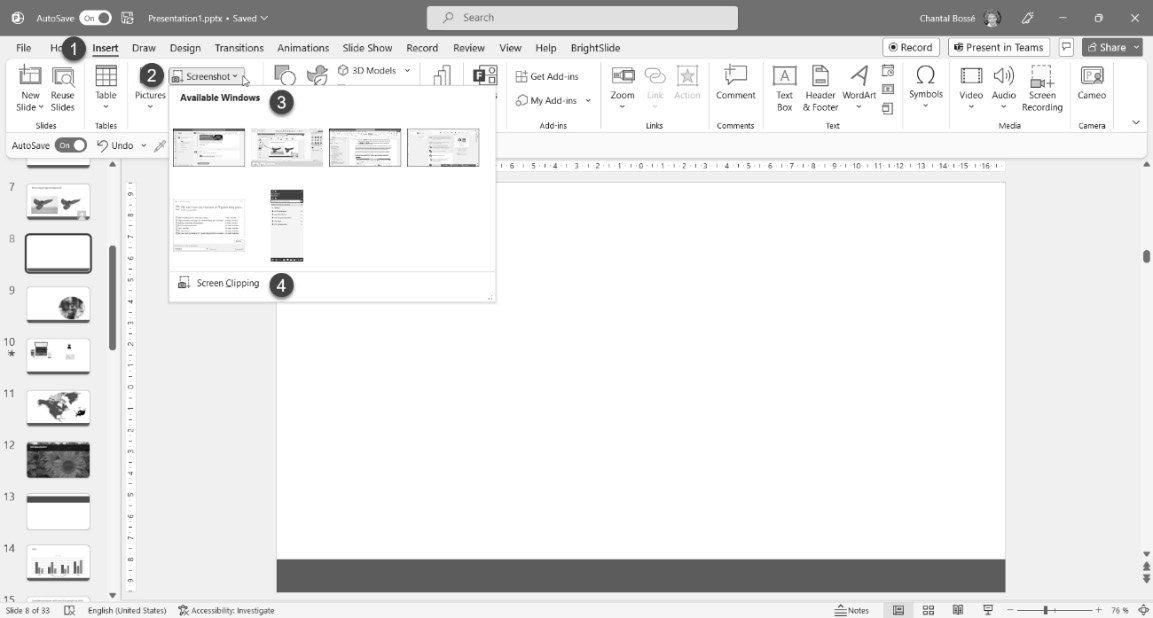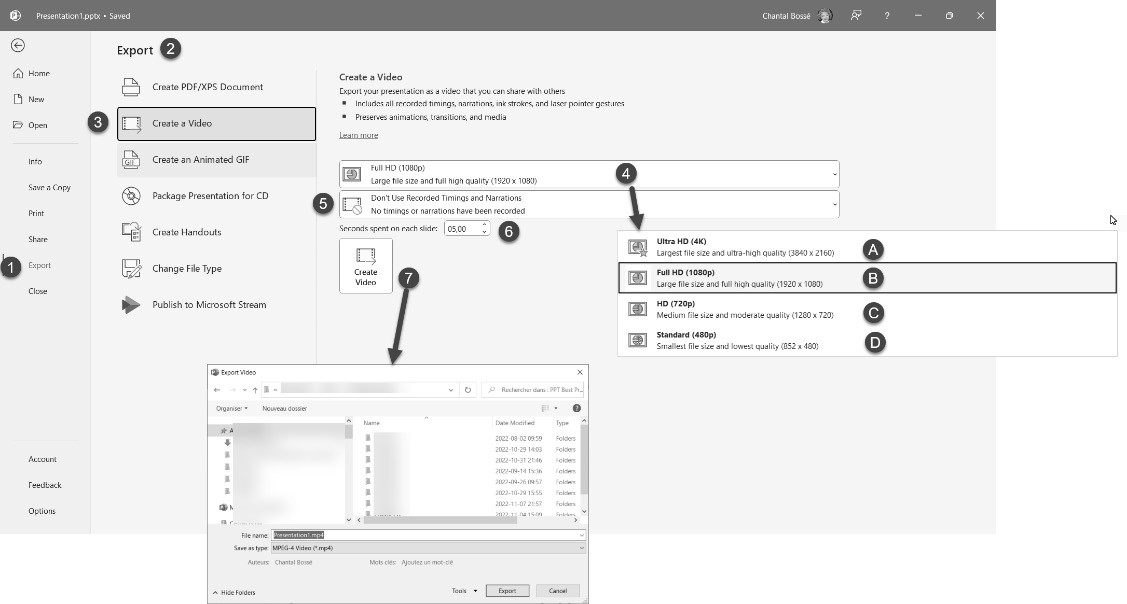Adding and Modifying Multimedia Elements
In terms of visual content creation, so far, we have learned about some of PowerPoint’s features that leverage AI and others that help us use graphical elements instead of text and bullet points. It is now time to level up your presentation game even more by learning how to include multimedia elements.
Adding multimedia elements will help make your presentations more impactful by providing content variety while making some topics easier to learn about via short videos rather than long text explanations.
In this chapter, we will discuss the following topics:
- Inserting and formatting videos
- Inserting and formatting audio
- Using the Cameo feature
- Inserting a screenshot or screen recording for a demo
- Creating a video file or GIF from a presentation



